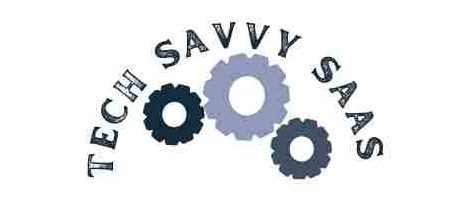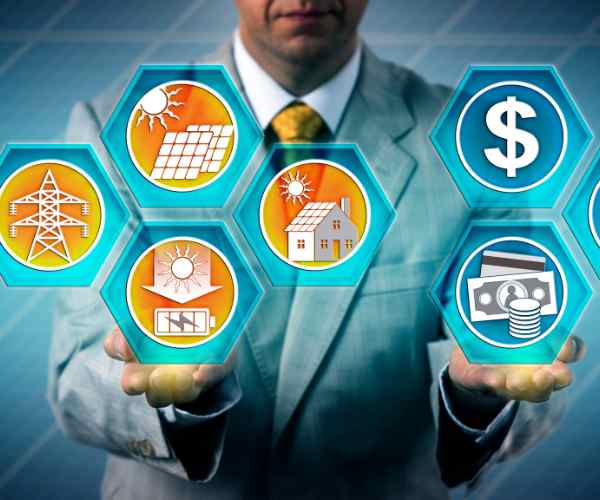The rise of edge computing is significantly reshaping the technological landscape, emerging as a pivotal force in the next decade. This evolution in technology involves shifting the focus from centralized cloud computing to edge computing, where data is processed closer to its source. This transition addresses several challenges of traditional cloud computing, including latency and data processing speed.
Edge computing enhances real-time data processing by reducing the distance data must travel. This proximity results in reduced latency, allowing for quicker responses and more efficient data management. The technology’s ability to handle data locally minimizes delays that occur when data is sent to distant data centers for processing.
Real-life examples illustrate the transformative impact of edge computing. In smart cities, edge devices manage and analyze data from various sensors to optimize traffic flow and improve public safety. Similarly, autonomous vehicles rely on edge computing for real-time processing of data from onboard sensors, ensuring safe and efficient navigation.

What is edge computing?
Edge computing represents a significant departure from traditional cloud computing models by focusing on decentralized data processing. Instead of relying solely on centralized data centers, edge computing uses edge devices—such as local servers, routers, and IoT devices—to perform data processing closer to the data source.
The benefits of edge computing are substantial. By processing data at the edge of the network, businesses and applications can achieve enhanced efficiency and improved response times. For instance, manufacturing companies using edge computing can execute predictive maintenance in real-time, preventing equipment failures and minimizing downtime. Similarly, in healthcare, wearable health devices leverage edge computing to continuously monitor patient data, delivering timely insights and alerts.
Examples of improved efficiency include reduced data transfer times in smart homes where edge devices control lighting and climate systems based on local data rather than relying on a remote server. This local processing leads to faster system responses and a better user experience.
How does edge computing work?
What is decentralized processing in edge computing?
Edge computing utilizes a decentralized network architecture, shifting from traditional data centers to a system where edge devices are distributed across various locations. This approach contrasts sharply with centralized models that rely heavily on distant data centers.
In edge computing, data processing occurs at or near the source of the data. Edge devices—such as local servers, routers, and sensors—handle the computation and analysis locally. This decentralization enables real-time processing and minimizes latency, which are crucial for many applications.
Examples of decentralized processing include smart homes, where IoT devices manage and control energy usage. For instance, smart thermostats and lighting systems use edge computing to adjust settings based on local data from temperature and occupancy sensors. This results in more efficient energy use and quicker adjustments compared to systems that rely on a central server.
In industrial automation, edge computing supports real-time monitoring and control of manufacturing processes. Sensors on the production line can instantly analyze data and make adjustments without the delay of sending data to a central data center. This capability enhances operational efficiency and reduces the likelihood of downtime.
Why does edge computing matter?
Importance and Impact of Edge Computing
Edge computing offers significant benefits in real-time data processing, which is essential for industries such as healthcare and manufacturing. The ability to process data locally and rapidly improves operational efficiency and supports more effective decision-making.
In healthcare, edge computing enables wearable health devices to continuously monitor patient data and deliver real-time alerts. For instance, smartwatches and fitness trackers can provide immediate feedback on vital signs and health metrics, leading to prompt medical responses and better patient outcomes.
For manufacturing, edge computing enhances predictive maintenance by analyzing data from equipment in real-time. This approach helps identify potential failures before they occur, reducing downtime and maintenance costs. Industrial IoT systems rely on edge computing to maintain smooth operations and improve overall productivity.
Data security and efficiency are also effectively addressed with edge computing. By processing data closer to its source, edge computing minimizes the distance data must travel, which reduces the risk of cybersecurity breaches and ensures that sensitive information is handled locally. This localized approach supports data privacy and enhances overall system security.
Examples of how edge computing improves security include banking applications, where transaction data is processed on local devices to prevent fraud and unauthorized access. Similarly, smart city infrastructure uses edge computing to manage traffic signals and surveillance systems securely and efficiently.
Key Drivers Behind the Rise of Edge Computing
What Technological Advancements Are Driving the Adoption of Edge Computing?
Growth in IoT and connected devices has significantly propelled the adoption of edge computing. As more IoT devices and sensors become prevalent, there is a growing need to process data locally rather than relying on distant data centers. This shift supports a more efficient edge strategy by minimizing latency and enhancing real-time data processing.
Advances in network infrastructure and 5G technology are crucial for the seamless integration of edge computing into business operations and software development. 5G networks offer increased bandwidth and reduced latency, which enable edge devices to handle larger volumes of data and provide faster responses. According to a report by Gartner, 5G technology is expected to boost edge computing adoption by 20% over the next few years due to its ability to support high-speed, low-latency connections.
Examples of technological advancements include the deployment of edge servers in smart cities to handle data from numerous sensors in real-time. This infrastructure allows for quicker data analysis and decision-making, improving city operations and services.
Why Is There a Growing Demand for Faster Data Processing?
Businesses are increasingly demanding faster data processing to support applications such as autonomous vehicles and real-time analytics. The ability to quickly process and analyze data is essential for applications that require immediate feedback and high-speed performance.
For instance, streaming services use edge computing to deliver high-quality video content with reduced latency, ensuring smooth playback for users. Gaming industries leverage edge computing to enhance user experiences by providing faster game loading times and reduced lag, which is crucial for online gaming.
Data processing demands are driven by the need for rapid responses in various applications. Autonomous cars, for example, rely on edge computing to process data from sensors and cameras in real-time to navigate and make driving decisions safely. Real-time analytics platforms use edge computing to analyze streaming data and provide actionable insights without delays.
What are the real-world applications of edge computing?
Smart Cities
Edge computing plays a pivotal role in smart cities by enabling real-time processing of data from sensors and IoT devices. This capability supports various urban management systems and enhances city infrastructure.
Example: Traffic management systems utilize edge computing to adjust signal timing based on current traffic conditions. By analyzing data from traffic sensors locally, these systems can optimize traffic flow and reduce congestion, leading to smoother and more efficient transportation networks.
Healthcare
In healthcare, edge computing facilitates real-time monitoring of patient data through wearable IoT devices. This technology enhances diagnostics and predictive maintenance, improving patient care and outcomes.
Example: Wearable health devices, such as smartwatches and fitness trackers, use edge computing to continuously monitor vital signs and provide immediate alerts if abnormalities are detected. This capability enables timely medical interventions and supports better management of chronic conditions.
Manufacturing and Industry 4.0
Edge computing enhances automation and operational efficiency in manufacturing by supporting predictive maintenance and reducing downtime. This technology is integral to Industry 4.0, where robots and industrial IoT systems rely on local data analysis for optimized performance.
Example: Robotics in manufacturing plants use edge computing to analyze data from production lines in real-time. This analysis allows for immediate adjustments to manufacturing processes, improving efficiency and reducing the risk of equipment failures.
In summary, edge computing is driven by advancements in technology, increasing demands for fast data processing, and its diverse real-world applications. Its impact spans across various sectors, from smart cities to healthcare and manufacturing, demonstrating its significance in the modern technological landscape.
Challenges and Considerations in Edge Computing
What Are the Security and Privacy Challenges in Edge Computing?
Security remains a paramount concern in edge computing, particularly due to the distribution of data centers across multiple locations and the increased cybersecurity risks associated with this model.
With the proliferation of IoT devices and other edge hardware, ensuring the security of these devices and their data is crucial. Edge devices often process sensitive information and are vulnerable to various cyber threats, including unauthorized access and data breaches.
Example: Protecting IoT devices in smart homes involves safeguarding them against potential vulnerabilities. These devices must implement robust encryption methods and authentication protocols to secure data transmission. Research by the European Union Agency for Cybersecurity (ENISA) highlights that IoT devices are frequently targeted due to their often inadequate security measures, emphasizing the need for enhanced protection strategies.
Addressing these security challenges requires a comprehensive approach that includes regular updates, patch management, and intrusion detection systems to mitigate risks and ensure the integrity of data.
What Are the Scalability Challenges in Edge Computing?
Managing the growth of edge computing networks involves navigating several technical challenges and ensuring that energy efficiency and sustainability goals are met. As the number of edge devices and the volume of data they handle increase, scalability becomes a critical consideration.
Example: Expanding smart grids to accommodate new edge devices and integrating them seamlessly into existing infrastructure poses significant challenges. According to a study by McKinsey & Company, the complexity of scaling edge networks requires careful planning and management to ensure efficient energy use and reduce operational costs.
Scalability issues include managing data traffic, maintaining system performance, and ensuring that energy consumption remains within sustainable limits. Solutions involve adopting modular and flexible architectures, implementing automated management tools, and using energy-efficient technologies to support network expansion and maintain high performance.
What Are the Emerging Trends in the Future of Edge Computing?
Integration with AI and machine learning is set to drive future advancements in edge computing, enhancing capabilities such as brain-inspired computing and large language models. These technologies will further expand the possibilities of edge computing by enabling more sophisticated data processing and analysis at the edge.
Potential innovations include improved compute power and energy efficiency, aligning with sustainability goals. As AI and machine learning models become more advanced, they will enhance the ability of edge devices to perform complex tasks and make real-time decisions.
For example, brain-inspired computing techniques, such as neuromorphic computing, aim to mimic the human brain’s processing capabilities, allowing edge devices to handle more complex tasks efficiently. Large language models will improve natural language processing capabilities at the edge, enabling more advanced voice recognition and chatbot functionalities.
How will edge computing impact businesses and consumers in the future?
The future of edge computing promises significant benefits for both businesses and consumers, offering enhanced user experiences and business value. As edge computing technologies evolve, they will transform various industries and contribute to digital transformation.
Example: Businesses leveraging edge computing for software development and digital transformation can achieve optimized performance and reduced latency. Companies in sectors such as retail and finance will benefit from real-time data processing, enabling them to offer personalized services and improve customer engagement.
For consumers, the advancements in edge computing will lead to better smart home experiences, enhanced streaming services, and more efficient health monitoring through wearable devices. As edge computing continues to evolve, it will play a pivotal role in shaping the future of technology and its applications in everyday life.
FAQs
What is edge computing?
Edge computing refers to the practice of processing data closer to its source rather than relying solely on centralized cloud computing or data centers. This approach reduces the distance data must travel, enabling faster processing and response times. Edge computing leverages edge devices and distributed networks to handle data locally, which is particularly advantageous for applications requiring real-time analysis and immediate action. Research by Gartner indicates that by 2025, over 75% of enterprise-generated data will be processed at the edge, highlighting the increasing importance of this technology.
How does edge computing differ from cloud computing?
Edge computing differs from cloud computing primarily in its approach to data processing. While cloud computing relies on centralized data centers to handle and process data, edge computing distributes this task to various edge devices at the periphery of the network. This decentralized approach significantly reduces latency and enhances real-time data processing. According to a study by IDC, edge computing can reduce latency by up to 50% compared to cloud computing, making it ideal for applications requiring immediate data handling and response.
What Are Some Real-World Examples of Edge Computing?
Real-world examples of edge computing include:
- Smart Cities: Traffic management systems use edge computing to analyze real-time traffic data and adjust signal timing accordingly. For example, Barcelona has implemented an edge-based traffic management system that optimizes traffic flow and reduces congestion.
- Wearable Health Devices: Devices like Fitbit and Apple Watch utilize edge computing to continuously monitor health metrics and provide instant alerts to users. This real-time processing enables quick responses to potential health issues and enhances diagnostic capabilities.
What Are the Main Benefits of Edge Computing?
Edge computing offers several key benefits:
- Reduced Latency: By processing data locally, edge computing minimizes the delay associated with data travel, leading to faster response times. Akamai Technologies reports that edge computing can cut latency by up to 70%.
- Improved Efficiency: Edge computing reduces the need for extensive data transmission to centralized data centers, optimizing network bandwidth and reducing costs.
- Enhanced Security: Local data processing mitigates some risks associated with transferring sensitive information over long distances, improving data security. According to Forrester Research, edge computing can enhance security by localizing data handling and reducing exposure to potential breaches.
- Better Real-Time Data Processing: Edge computing enables immediate analysis and action on data, which is crucial for applications like autonomous vehicles and industrial automation. This capability improves overall operational efficiency and decision-making.
What Challenges Does Edge Computing Face?
Edge computing faces several challenges:
- Security and Privacy: Securing edge devices and ensuring safe data transmission are critical concerns. The distributed nature of edge computing can make it challenging to implement uniform security measures across all devices. Research by Symantec highlights that edge devices often lack robust security, making them vulnerable to cyber threats.
- Scalability: Managing the growth of edge computing networks involves addressing technical challenges related to the integration of new devices and ensuring energy efficiency. Deloitte notes that expanding edge networks requires sophisticated management tools and strategies to maintain performance and sustainability.
- Energy Efficiency: As the number of edge devices increases, managing their energy consumption becomes crucial to meeting sustainability goals. Studies by McKinsey & Company emphasize the need for energy-efficient technologies and practices to support the scalability of edge computing solutions.
Conclusion
The rise of edge computing marks a significant shift in how data is processed and utilized, prioritizing efficiency, security, and real-time processing. Edge computing’s decentralized approach offers numerous advantages over traditional cloud computing, including reduced latency, improved operational efficiency, and enhanced data security.
Anticipate continued growth and mainstream adoption of edge computing technologies over the next decade. This advancement promises to transform various industries by enhancing business operations and shaping the technology landscape. As edge computing evolves, its impact on businesses and consumers will become increasingly significant, driving innovation and efficiency across multiple sectors.
More Post






